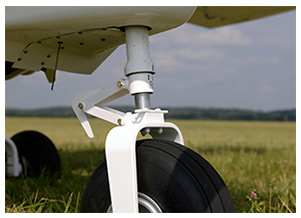Training Tips |

The limiting angle
Returning to the ramp after a lunch break and a weather check at your cross-country destination, you behold a vacant tiedown spot where your trainer had been parked! OK, there it is, at the far end of the ramp with the fuel truck pulled up alongside. When—and how—your trainer was moved may not be readily apparent, but the surprise relocation does suggest the need for a careful inspection before the next flight leg. Why the aircraft was moved may or may not be obvious either. If you had been marshaled in to parking near the main hangar, your aircraft might have been repositioned to allow a large aircraft housed within to be towed outside for flight. Of all these questions, how your aircraft was moved is most important—especially if you find out that a motorized aircraft tug did the job. Whether it was moved by hand or machine, your responsibility to determine its airworthiness reminds you to give it a close examination, paying special attention to the nosewheel assembly to make sure no damage occurred during the tow operation. What's the risk? Your nosewheel aircraft has a limiting angle either side of center for turning. For example, it is 30 degrees for a Cessna 182S and a Piper PA-28-161 Warrior. (What's the limiting angle for your aircraft?) "The ears and tab on the strut assembly are supposed to prevent you or the FBO line person from exceeding the turning radius, a mistake that could have the expensive result of damaging the steering mechanism and nosegear," explains this Flight Training magazine article. "It is relatively easy, however, for someone who is towing the airplane using a tug or tractor to turn too sharply and bend or break one of the ears on the strut assembly or the tab that the ears impact at the limits of the turning arc." That could leave you without control over your nosewheel steering. On flights on which you only make a quick stop, you can probably oversee or personally perform any needed ground maneuvering of your aircraft. But airport ramps are busy places where reshuffling of aircraft may happen multiple times a day—mostly on short notice. If you find that your aircraft was moved during your absence, make a thorough airworthiness check before further flight. |


